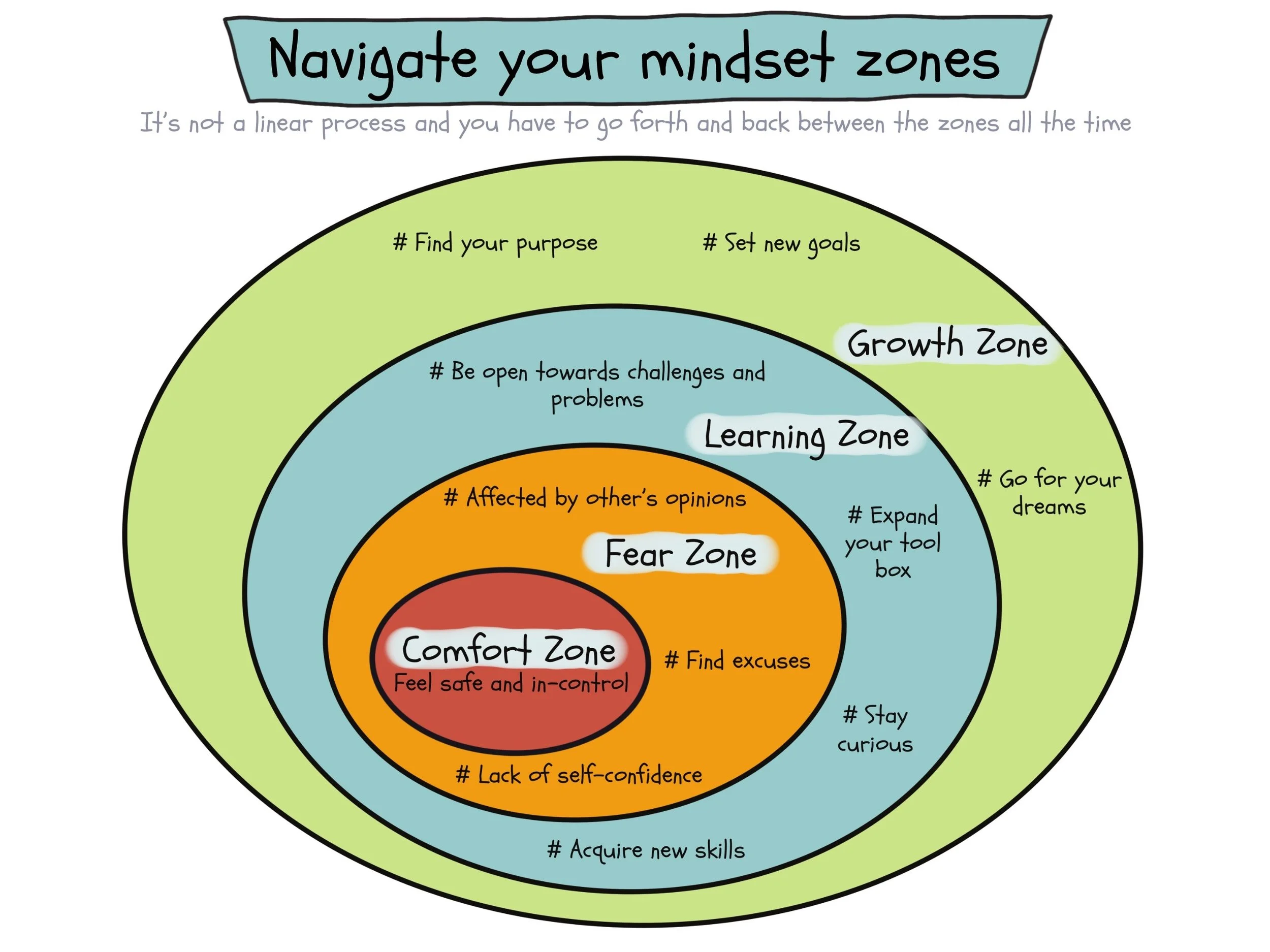It Starts with Mindset - But How?
We say it all the time: “It starts with mindset.” And while that’s true, it’s also one of the hardest things to act on. Mindset is personal. It’s shaped by our experiences, emotions, beliefs, and habits. You can’t simply hand someone a new mindset. You can’t install it in a team via a slide deck. And most people, especially in busy work environments, struggle to translate mindset talk into something they can use.
So what do we do?
One practical way to work with mindset - both individually and in teams - is to start with the comfort zone. But not in the usual way. Too often, the message is: “You need to get out of your comfort zone!” It sounds bold and dramatic, but it’s also vague, unhelpful, and sometimes even harmful.
Because the truth is: the comfort zone isn’t the problem. In fact, it’s often where we do our best work. It’s where we feel safe, in control, and confident. Rather than escape it, we should be focused on expanding it.
This is where the idea of mindset zones comes in - a simple, powerful way to make mindset work concrete. The model outlines four interconnected zones: the Comfort Zone, where you feel secure and efficient; the Fear Zone, where self-doubt, hesitation, and judgment show up; the Learning Zone, where you begin to stretch your skills and take on new challenges; and finally the Growth Zone, where you integrate what you’ve learned and move toward bigger goals.
Instead of leaping from one zone to the next, the idea is to move between them fluidly - and to expand your comfort zone gradually. What used to feel like fear eventually becomes learning. What used to be a stretch eventually becomes familiar. This isn’t about forcing change. It’s about building capacity, confidence, and resilience over time.
What makes this model work is its simplicity. It gives individuals a clear way to reflect on their current state and a path to move forward. For teams, it creates a shared language around growth and challenge. It allows for conversations about mindset that are safe, practical, and productive. You can use it in team check-ins, performance development talks, or leadership coaching. It scales - and it sticks.
Of course, there are still challenges. Time is always an issue. Mindset work can feel like something to “get to later.” And even when individuals shift their mindset, it’s difficult to spread that change across a whole team or culture. But this is exactly why tools like the mindset zones are helpful. They’re visual, they’re intuitive, and they support the kind of behavioral reflection that leads to real development.
In my workshops, we use this model to help people pause, reflect, and build a roadmap for growth - not by jumping out of their comfort zone, but by steadily expanding it. We focus on small steps, not big leaps. We talk about how fear and discomfort are part of the process, not barriers. And we explore how to support each other when we’re operating outside what’s familiar.
Mindset is still where it starts. But working with mindset requires structure, language, and shared understanding. The mindset zones offer that.
So next time you find yourself saying “It’s about mindset,” consider this instead:
Where is your comfort zone today - and what would it take to expand it and what would this mean for you?

